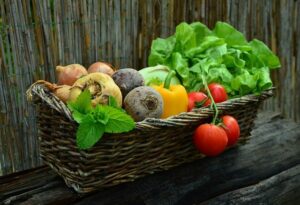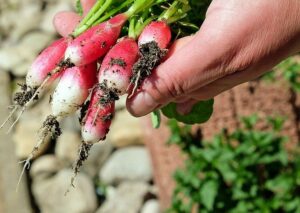Spring is a favourite time of year for most backyard gardeners. The winter rain and chill slowly fade, as sunshine and warmth give your garden a new lease on life.
Thanks to winter rains, your garden should be moist and fertile when spring comes around, although keeping up a solid garden maintenance routine is still important. The addition of a slow release fertiliser and aeration of the soil at the beginning of spring will help your spring plants to grow.
Spring is the perfect time of year to plant a variety of fruits and veggies. And they not only have the benefit of looking great, but they taste great too! You’ll also save money in the long term, as tending lovingly to your plants will result in healthy harvests that the whole family will enjoy.
So what do you need to know about planting fruits and veggies in the Australian spring? Let’s take a look!
Appropriate Spring Fruits and Veggies by Region
Because Australia’s climate ranges from the tropical heat of the north to the bitter chill of the south, different plants will grow well in different places. Understandably, fruits that are happy with an icy Tasmanian September morning may not cope quite so well with the heat and humidity of Cairns.
Here are your best fruit and veggie options by region:
Tropical (North Queensland, North WA, Northern Territory): zucchini, beetroot, watermelon, capsicum, tomato, carrot, pumpkin, chilli, sweet potato, Chinese Cabbage, squash, corn, spinach, cucumber, silver beet, French beans, rock melon, eggplant, radish, lettuce, and onion.
Arid Inland (Central Australia): It’s recommended that arid inland areas have most of their fruits and veggies planted before spring comes around, as the dry heat can damage developing seedlings. That said, beans, capsicum, onion, radish and sweet corn can still grow well if planted in spring.
Sub-Tropical through to Cool Climate (The Rest of Australia): beetroot, zucchini, broccoli, tomato, cabbage, sweet corn, capsicum, strawberry, carrot, spring onion, cauliflower, spinach, celery, pea, cucumber, pak choi, eggplant, leek, endive, onion, and lettuce.
How to Plant Fruits and Veggies
Planting your spring fruits and veggies is a relatively simple process. You can either use a standard garden bed, or, if you’re a little more stuck for space, you can instead use a container arrangement. No matter where you plant your fruits and veggies, the soil should be well aerated, moist, and high in organic matter (i.e. fertile).
If you’re planting from seed, the seed packet will instruct on how deep to sow; this will usually be somewhere between a direct sow – left on top of the soil – and a couple of centimetres deep. For seedlings (which, although more expensive than seeds, can prove to be easier to grow for beginner gardeners), it’s simply a matter of digging a hole, loosening the soil around the roots, planting, and watering in.
Spring Herb Maintenance
Like most plants, your newly planted fruits and veggies will enjoy plenty of sunlight and regular watering. Some fruits and veggies are more dependent on sunshine than others though; fruit trees, tomatoes, beans and capsicum absolutely love the sun, while root and leafy vegetables are far less reliant on the rays. It’s wise to put your taller plants on the south side of your plot and the smaller plants to the north, so as to maximise the sunlight that hits each.
Watering can be tricky in the sometimes wet/sometimes dry season of spring, and different fruits and vegetables require different amounts of moisture. Water-heavy fruit and veggies like melons and cucumbers will lap up every bit of water they get, while others (such as tomatoes) like to stay drier.
It can be a tricky balancing act for new gardeners, as the symptoms of dehydration and waterlogging can look very similar (due to waterlogging – cutting off the oxygen supply to the roots). If you’re unsure about the care of any specific fruit or vegetable it’s wise to consult your local garden centre.
If you’ve got any other Spring garden queries, don’t hesitate to contact the friendly team at McKays.



